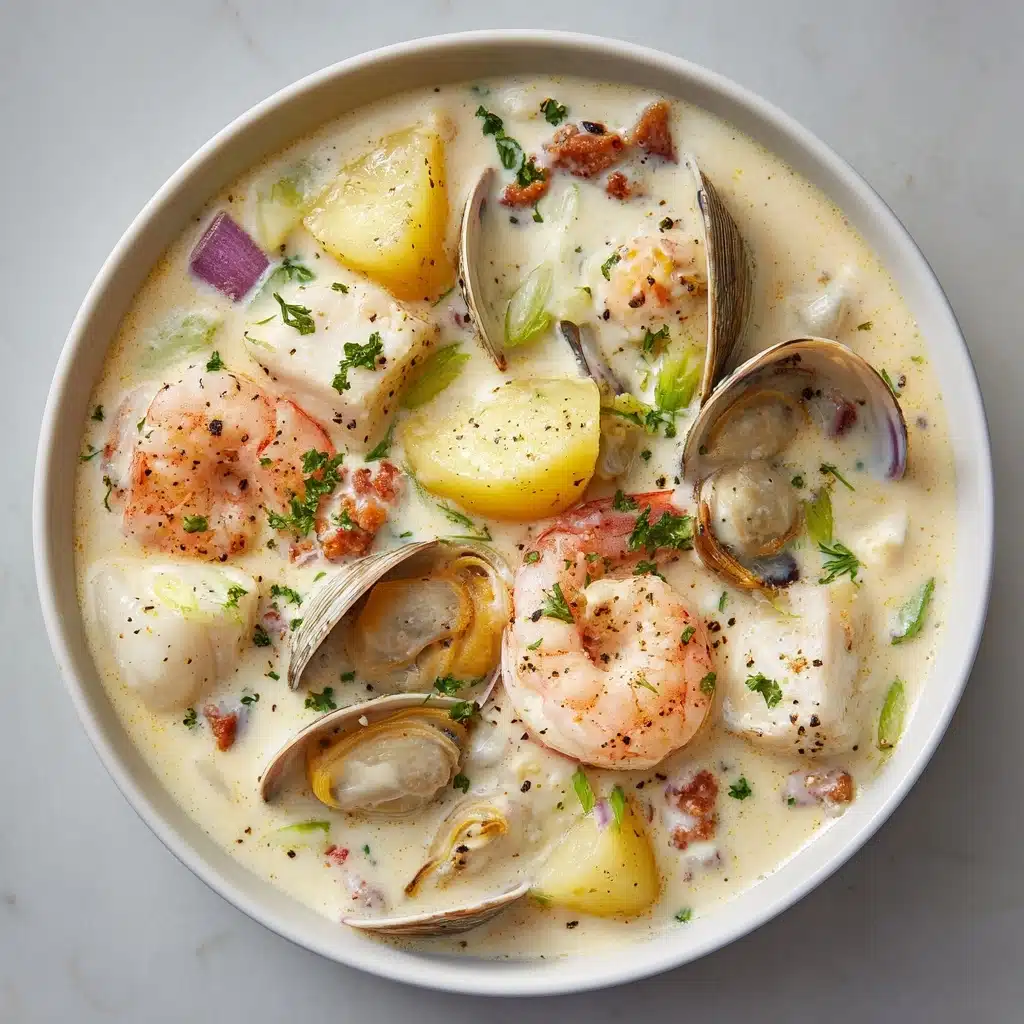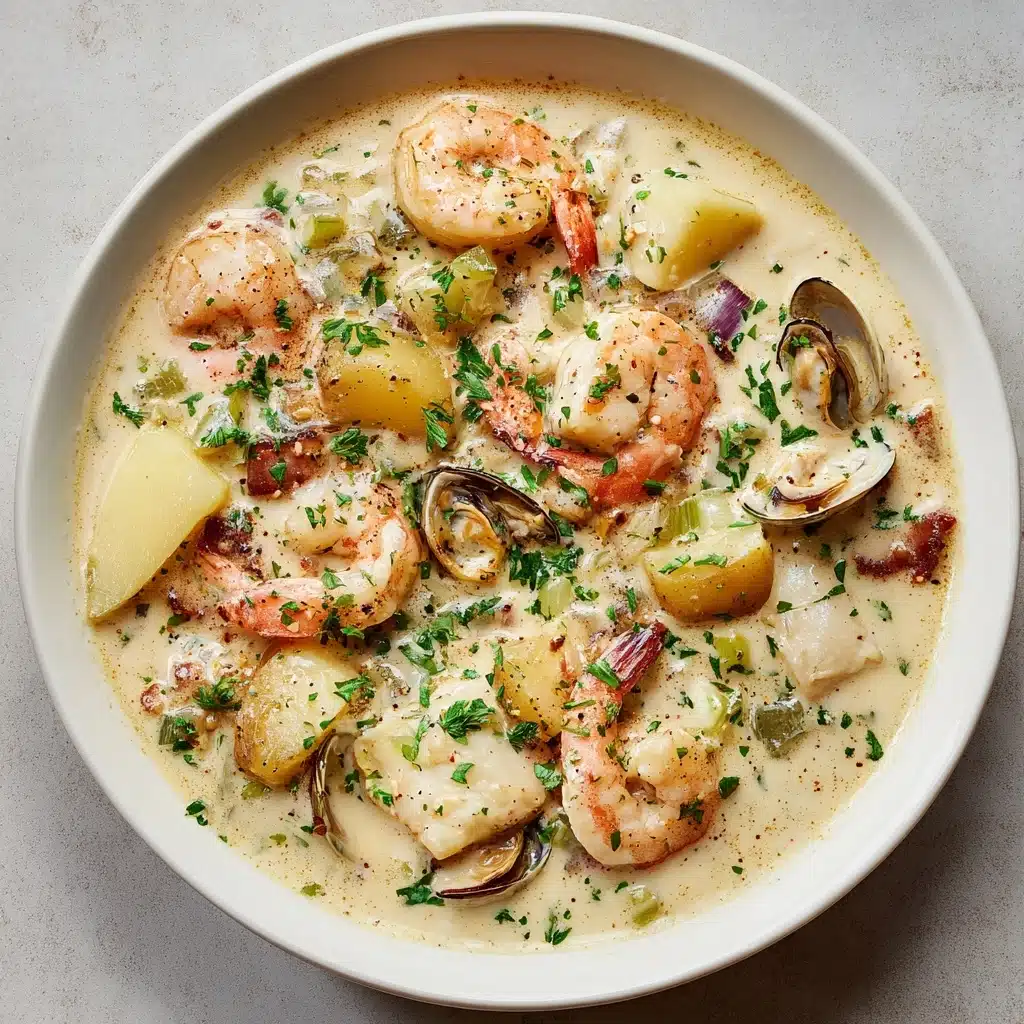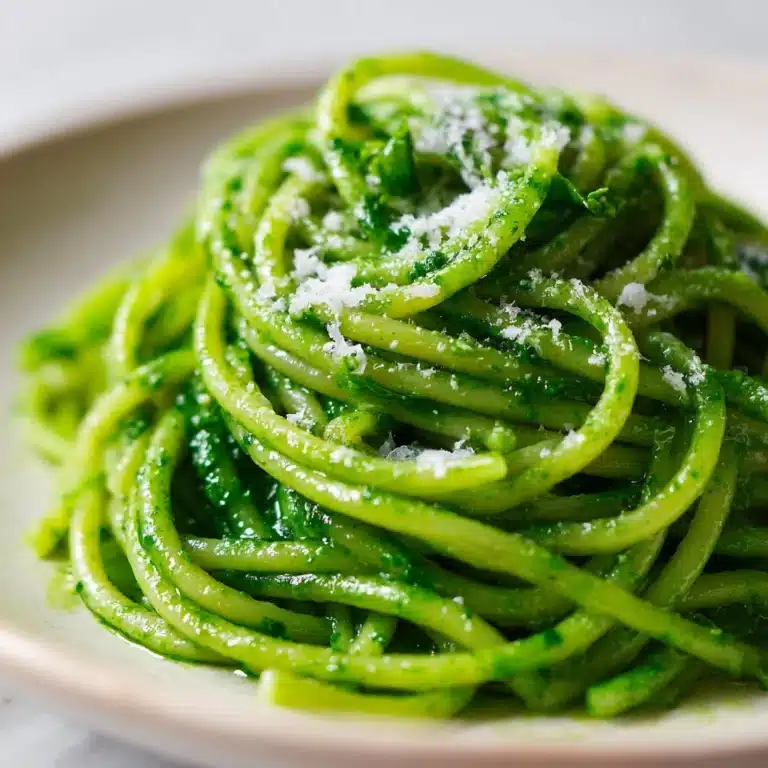Nova Scotia Seafood Chowder Recipe
If you’ve never tasted an authentic Nova Scotia Seafood Chowder, you’re in for a heartwarming treat! This creamy, savory soup is a beloved staple along the windswept Atlantic coast, brimming with tender fish, sweet shellfish, and just the right balance of vegetables and herbs. With every spoonful, you’ll experience a comforting taste of maritime tradition that’s easy enough for a cozy weeknight dinner yet impressive enough for company. There’s unmistakable magic in this bowl—rich, briny, perfectly seasoned, and a shining example of comfort food done right.

Ingredients You’ll Need
Every ingredient in this Nova Scotia Seafood Chowder recipe plays a special role, adding depth, color, or richness to the final bowl. The best part? The list is simple and approachable, focusing on fresh seafood and a few pantry staples for unforgettable flavor.
- Butter: Adds richness and helps create a velvety base for the chowder.
- Olive oil: Combines with butter to prevent scorching and adds a hint of fruitiness.
- Onion: Brings subtle sweetness and depth, laying the aromatic foundation.
- Celery: Offers crispness and that unmistakable savory note every good chowder needs.
- Carrot: Lends appealing color and a gentle natural sweetness.
- Garlic: Delivers that extra pop of flavor without overwhelming the seafood.
- All-purpose flour: Thickens the chowder, giving it that signature creamy texture.
- Seafood or fish stock: Infuses the soup with deep, briny layers of taste—homemade or store-bought both work!
- Heavy cream: Creates a luscious, luxurious broth that truly defines Nova Scotia Seafood Chowder.
- Whole milk: Lightens up the cream while keeping the soup silky-smooth.
- Yukon gold potatoes: Their buttery texture holds up well and makes each bite satisfyingly hearty.
- Bay leaf: Adds subtle aromatic notes that round out the flavors perfectly.
- Dried thyme: A classic herbal hint that marries well with seafood.
- Salt and pepper: Essential for enhancing every ingredient in the pot.
- Haddock or white fish: Flaky, mild, and a true chowder classic.
- Salmon: Adds rich color and a melt-in-your-mouth texture.
- Scallops: Sweet, tender, and a luxurious addition.
- Shrimp: Offer a gentle bite and subtle sea flavor.
- Cooked lobster meat (optional): For an indulgent, authentic Maritime touch.
- Fresh parsley: Brings brightness and a pop of green to the finished dish.
- Lemon wedges (optional): A squeeze of citrus wakes up every flavor on your palate.
How to Make Nova Scotia Seafood Chowder
Step 1: Sauté Aromatics
Begin by heating your butter and olive oil in a large, heavy-bottomed pot over medium heat. Toss in the onion, celery, and carrot, sautéing until they’re soft, fragrant, and starting to release their natural sweetness—usually about five minutes. Then, add the minced garlic and cook for just a minute more, filling the kitchen with a mouthwatering aroma that signals your chowder is officially underway!
Step 2: Create the Roux
Sprinkle in the flour and stir constantly for two minutes. This step is key! You’re forming a light roux that not only thickens the soup but also removes any raw flour taste. The mixture will turn slightly golden and smell toasty by the time it’s ready for the next step.
Step 3: Build the Broth
Slowly whisk in your seafood or fish stock to create a smooth, lump-free base. Pour in the whole milk and heavy cream, then gently bring everything to a simmer. The result is a perfectly creamy, aromatic broth that will soon cradle all those beautiful seafood pieces.
Step 4: Add Potatoes and Simmer
Stir in the diced Yukon gold potatoes, bay leaf, dried thyme, and a generous pinch of salt and pepper. Let the mixture simmer uncovered for 10 to 12 minutes, just until the potatoes are tender but not falling apart. They’ll be the hearty backbone of your chowder, soaking up all those luscious flavors.
Step 5: Add Seafood
Gently add the haddock, salmon, scallops, shrimp, and, if you’re going all-out, some luscious lobster meat. Simmer gently for another 5 to 7 minutes, stirring occasionally. You’ll know it’s ready when the fish flakes easily and the shrimp are perfectly opaque. Be careful not to overcook—the seafood should be juicy and tender.
Step 6: Finish and Season
Remove the bay leaf and sprinkle in freshly chopped parsley for a burst of freshness. Taste your chowder, and adjust the salt and pepper as needed. It should be deeply savory, creamy, and vibrant. Your Nova Scotia Seafood Chowder is ready to ladle into bowls and enjoy!
How to Serve Nova Scotia Seafood Chowder

Garnishes
A finishing sprinkle of fresh parsley is classic, but consider adding extra lemon wedges on the table for a bright, zesty lift. A crack of black pepper or a tiny drizzle of good olive oil wouldn’t be out of place either. Some folks even like a few buttery oyster crackers or a warm, rustic crouton floating on top.
Side Dishes
The time-honored partners for Nova Scotia Seafood Chowder are slices of crusty rustic bread or pillowy Maritime tea biscuits—perfect for soaking up every drop. For a bit of brightness, serve with a crisp green salad dressed simply with lemon and olive oil.
Creative Ways to Present
Want to dazzle guests? Try serving your chowder in small bread bowls or even wide mugs for a cozy, pub-style vibe. For an appetizer, ladle small portions into espresso cups or tumblers for a modern twist. A sprinkle of microgreens or dill sprigs can instantly elevate the presentation.
Make Ahead and Storage
Storing Leftovers
Nova Scotia Seafood Chowder keeps surprisingly well. Let leftovers cool completely before transferring to an airtight container. Store in the refrigerator for up to 2 days—just know the flavors deepen and improve overnight!
Freezing
Freezing creamy chowders can sometimes change their consistency, but it’s possible in a pinch. Cool the chowder thoroughly and freeze in individual portions for up to one month. Let it thaw overnight in the fridge for best results, and ring in a taste of the Atlantic, any time.
Reheating
Warm your chowder gently over low heat, stirring frequently to encourage the cream to blend back in and keep the seafood tender. If the soup separates a little, a quick whisk usually brings it back together. For a quick lunch, reheating in the microwave works too—just use medium power and stir often.
FAQs
Can I use frozen seafood for Nova Scotia Seafood Chowder?
Absolutely! Frozen seafood works perfectly, especially if that’s what you have on hand. Just be sure to thaw and pat it dry before adding to the chowder to avoid extra water diluting your broth.
What fish are best for Nova Scotia Seafood Chowder?
Traditionally, you’ll find haddock or cod, but any mild, firm white fish will do the trick. Salmon adds wonderful richness if you want variety, and scallops or shrimp round out the classic maritime medley.
How can I make this chowder gluten-free?
Swap the all-purpose flour for a gluten-free flour blend or even a little cornstarch slurry. You’ll achieve the same creamy texture while keeping the chowder friendly for gluten-free diets.
Why does my chowder separate after reheating?
Separation can happen when cream-based soups are heated too quickly or boiled. Warm it gently and stir often. If it does separate, whisking vigorously usually smooths it right out.
Is Nova Scotia Seafood Chowder spicy?
No, it’s deeply savory and creamy without much heat. If you enjoy a little kick, feel free to add a dash of hot sauce or a pinch of crushed red pepper to your bowl.
Final Thoughts
Whether you’re sharing it with family or treating yourself to a comforting solo dinner, Nova Scotia Seafood Chowder has a way of warming you from the inside out. Trust me, once you’ve tasted this authentic maritime favorite, you’ll come back to it again and again. I can’t wait for you to enjoy every creamy, ocean-scented spoonful—give it a try and let a little taste of the Atlantic coast brighten your table!
Print
Nova Scotia Seafood Chowder Recipe
- Total Time: 45 minutes
- Yield: 6 servings 1x
- Diet: Non-Vegetarian
Description
This Nova Scotia Seafood Chowder is a comforting and creamy fish soup packed with a variety of fresh seafood. A classic Canadian dish that is perfect for a cozy meal any time of the year.
Ingredients
For the Chowder:
- 2 tablespoons butter
- 1 tablespoon olive oil
- 1 small onion, finely chopped
- 1 celery stalk, diced
- 1 small carrot, diced
- 2 cloves garlic, minced
- 3 tablespoons all-purpose flour
- 4 cups seafood or fish stock
- 1 cup heavy cream
- 1 cup whole milk
- 2 medium Yukon gold potatoes, peeled and diced
- 1 bay leaf
- 1/2 teaspoon dried thyme
- Salt and pepper to taste
- 1/2 lb haddock or white fish, cut into chunks
- 1/2 lb salmon, cut into chunks
- 1/2 lb scallops
- 1/2 lb shrimp, peeled and deveined
- 1/2 cup cooked lobster meat (optional)
- 2 tablespoons chopped fresh parsley
- Lemon wedges for serving (optional)
Instructions
- In a large pot, heat butter and olive oil over medium heat. Add the chopped onion, celery, and carrot, and sauté until softened, about 5 minutes.
- Stir in the garlic and cook for 1 more minute.
- Sprinkle in the flour and stir constantly for 2 minutes to make a roux.
- Slowly whisk in the seafood stock, followed by the milk and cream, and bring to a gentle simmer.
- Add the diced potatoes, bay leaf, thyme, salt, and pepper. Simmer uncovered for 10–12 minutes or until the potatoes are just tender.
- Gently stir in the haddock, salmon, scallops, shrimp, and lobster (if using).
- Simmer for another 5–7 minutes until the seafood is cooked through and opaque.
- Remove bay leaf and stir in fresh parsley.
- Taste and adjust seasoning as needed.
- Serve hot with lemon wedges on the side, if desired.
Notes
- This chowder can be made ahead and tastes even better the next day.
- Serve with crusty bread or traditional tea biscuits for an authentic Maritime meal.
- Use fresh, high-quality seafood for the best flavor.
- Prep Time: 20 minutes
- Cook Time: 25 minutes
- Category: Main Course
- Method: Stovetop
- Cuisine: Canadian
Nutrition
- Serving Size: 1 bowl
- Calories: 460
- Sugar: 5 g
- Sodium: 780 mg
- Fat: 25 g
- Saturated Fat: 13 g
- Unsaturated Fat: 10 g
- Trans Fat: 0 g
- Carbohydrates: 22 g
- Fiber: 2 g
- Protein: 38 g
- Cholesterol: 140 mg






